

The United States is the largest economy in the world, which is continuously growing. Even during the Covid recession, it grew 5.7%, thanks to an increase in consumer spending.
Although the US has made many advances in several fields, including technology and infrastructure, the ports of the US play a major role in its economic progress.
The developed nation has about 360 shipping ports, all equipped with the latest equipment and infrastructure to deal with different cargo types.
The US ports and harbours are one of the largest and key maritime gateways in the world, not to mention that they are also the busiest, handling huge volumes of shipments.
In 2022, the US ports handled around 60 million TEUs, a substantial increase from the previous years.
The container ports of the US are connected to almost all the major ports worldwide and offer an array of services to their customers, which has made the nation’s container port industry quite competitive.
Thus, this article will explore the top 10 busiest and largest container ports in the United States.
Los Angeles Seaport is situated in San Pedro Bay, south of downtown Los Angeles in the US state of California. Also known as America’s port, it is one of the busiest ports in the world and also a major hub for cruise ships.
For over 20 years, it has maintained the number-one position among all the US ports in terms of handling exceptional volumes of containerised cargo. Hence, it has emerged as the top port in the US with regard to container throughput, handling over 9 million TEUs annually.
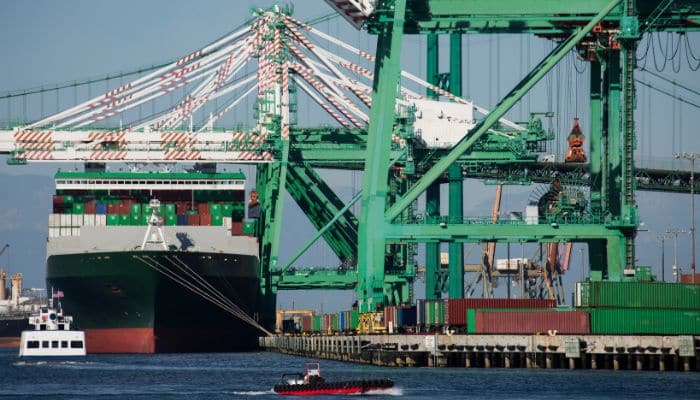

Los Angeles Port handled 9,213,395 TEUs in 2020, 10.7 million TEUs in 2021 and 10,663,636 TEUs in 2022. It has generated employment for around 3 million people in the United States. It is a key driver of Southern California’s economy, supporting numerous livelihoods and generating billions of dollars in revenue each year.
It comprises 7500 acres of land and water, which has passenger terminals and 25 cargo terminals handling automobiles, dry and liquid bulk cargo, breakbulk, storage and warehousing areas.
Los Angeles Port is also the 17th busiest container port in the world and deals with 20% of all the imports coming into the country. Its major trading partners include China, Japan, Vietnam, South Korea etc.
The Port of New Jersey and New York is the biggest port on the eastern coast of the United States. It comprises numerous facilities along the coast of New York Harbour ad Newark Bay.
It is a major centre of international maritime trade and commerce and serves as a gateway for cargo coming in and out of the US from across the world. It handles a range of cargo such as containers, petroleum products, automobiles, consumer goods, furniture, beverages, machinery, apparel, paper etc.
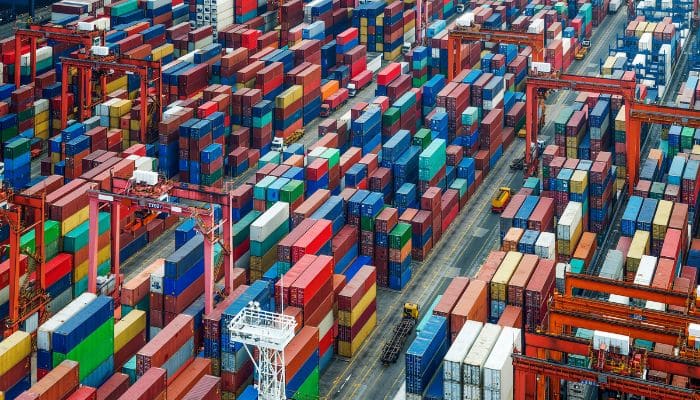

Port of New Jersey and New York trades extensively with China, followed by India, Germany, Italy and the Netherlands.
The port handled more than 7.5 million TEUs in 2020, around 8.9 million TEUs in 2021 and 9,493,664 TEUs in 2022.
It has 6 container terminals that can accommodate 9 14,000 TEU ships simultaneously. It also has a large complex of about 386 kilometres of shipping channels, port facilities and anchorages.
The Port of Long Beach lies in San Pedro’s Bay near the Port of Los Angeles. It is one of the busiest ports in the US, according to the size and cargo volumes handled and also the 21st busiest container port in the world.
The port handled 8,113,315 TEUs in 2020, 9.38 million TEUs in 2021 and 9,133,657 TEUs in 2022.
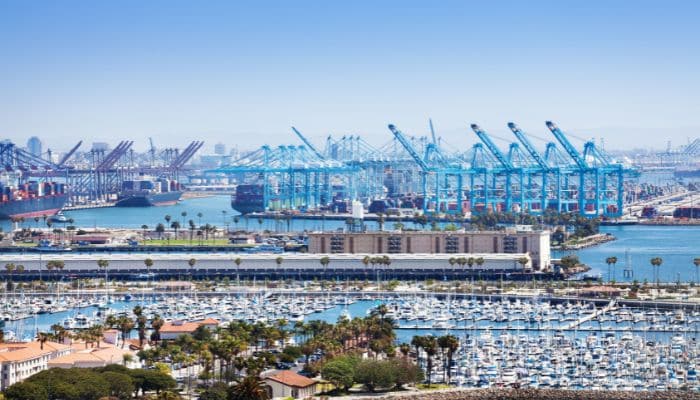

It exports meat, groceries, grains, dairy items, animal skins, and cotton. It imports beverages, wine, refrigerated food, seafood etc.
The Port of Long Beach serves as a primary channel for the US-Asian maritime trade. It is deemed a leader in implementing eco-friendly policies and practices such as the award-winning Green Port Policy.
Per this policy, ships are instructed to decrease their speeds within twenty nautical miles of the port harbour to reduce the consumption of fuel and control air pollution. Vessels abiding by this rule are offered discounts which have made this program quite successful.
The port has 22 terminals, including 6 container terminals that serve 175 shipping lines with links to around 217 major ports of the world. Port of Long Beach makes over 100 billion US dollars in trade every year and employs over 300,000 people in California.
Situated in Savannah, Georgia, on the United States’ southeastern shores, the Port of Savannah is the 4th busiest port in the country and the biggest single container terminal in the North American continent.
The port handles paper, clay, fabrics, wood pulp, consumer goods, electronics, machinery, appliances, automobiles etc.
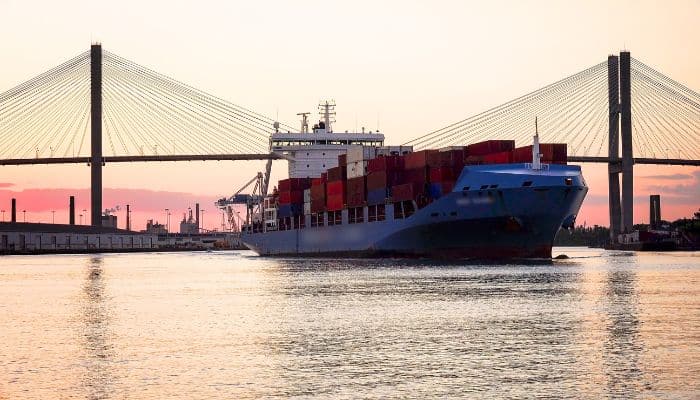

It handled 4,682,249 TEUs in 2020, 5.6 million TEUs in 2021 and 5,763,711 TEUs in 2022. According to estimates, these numbers will increase in 2023 as the facility’s annual container handling capacity will grow by 750,000 TEU.
Operated by Georgia Ports Authority, the port has 2 main terminal facilities- the Garden City Terminal and the Ocean Terminal. The former is the main container terminal, which is one of the most technologically advanced terminals in the world. The latter mainly handles RORO and breakbulk.
Port of Savannah’s Jasper Ocean Terminal will be the largest in the country once it becomes operational by 2035.
Savannah Port is a key maritime route for trade between the US and countries in Asia, Latin America and Europe. It offers many services, such as logistics, distribution and warehousing.
Houston Port is situated in Texas and is the busiest facility for foreign waterborne tonnage in the US. It is also the largest port in the Gulf Of Mexico. It drives economic growth in the region by generating 1.35 million jobs in Texas and 3.2 million jobs in the country, leading to over $ 265 billion in revenue annually.
The port’s annual container volume in 2021 was around 3.5 million TEUs. In 2022, it witnessed an increase and handled more than 3.9 million TEUs.
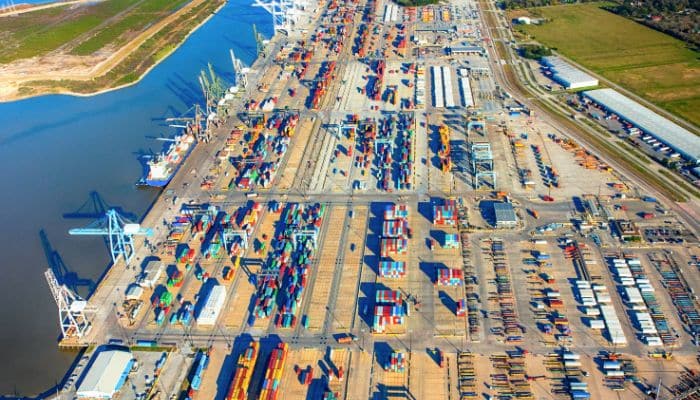

Houston Port has 2 container terminals and the biggest petrochemical-producing facility in the country, which is why petroleum and its derivatives are the leading export and import commodities here.
Other major export products are mineral products, oils, plastics, wood, fertilisers, steel and iron. It receives shipments of palm oil, milk, wine, kerosene and ethanol.
It has numerous terminals, a major one being the Bayport Container Terminal which is one of the most technologically advanced in the US. The port trades with Europe, APEC, Africa and the Middle East.
Strategically positioned along the eastern coast of the country, the Virginia Port is directly accessible to the Atlantic Ocean, which makes it the perfect port for container ships. In fact, Virginia Port can accommodate the largest container vessels in the world.
It was the 6th biggest port in the US in 2022, handling a total container traffic of 3,695,156 TEUs. In the previous year, it handled 3,522,834 TEUs. It also provides direct and indirect employment to over 397,000 people.
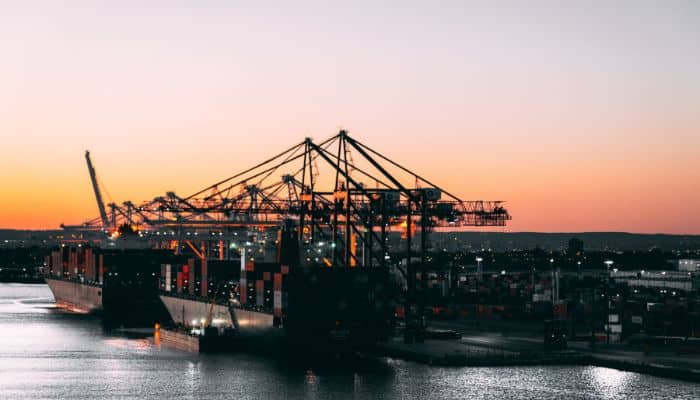

It boasts 4 marine terminals. deep water channels, modern infrastructural facilities, latest equipment that allow efficient handling of cargo and quicker turnaround times for vessels.
Over the years, the port has forged strong and long-lasting partnerships with shipping companies, carriers and providers of logistics services. It has carved out a smooth supply chain to streamline the cargo flow and boost productivity. All these steps have made it a popular choice among shippers.
It trades with China, Germany, Brazil, Belgium, the UK etc., with its main exports being machinery, furniture, salt, sulphur, stone, mineral fuels, oil and beverages. Imports comprise grains, seeds, fruits, wood, wood pulp, animal fodder, oil and so on.
The Northwest Seaport Alliance or NWSA includes the port of Seattle and Tacoma in Washington, USA. Both seaports were merged in 2015, and their operations, investments, marketing efforts and planning strategies were unified to strengthen the Puget Sound gateway and bring more cargo to the region.
The port is situated in the Pacific Northwest and functions as a maritime trade gateway with Asia. It operates many terminals which handle diverse cargo, including containerised cargo, breakbulk cargo, automobiles, agricultural items, project cargo etc.
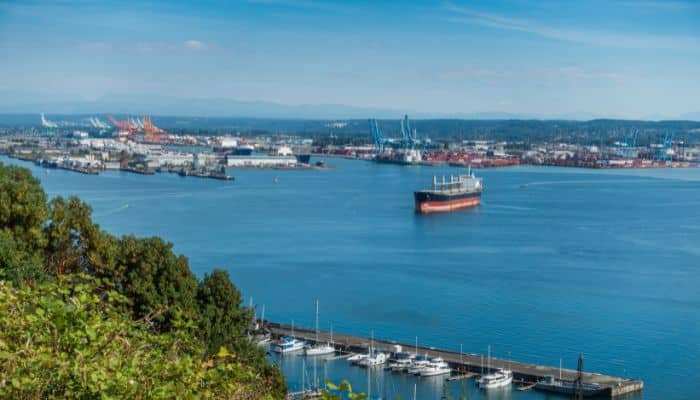

One of the biggest container ports in North America, it handles approximately 4 million TEUs annually. It handled over 3.3 million TEUs in 2020, 3,736,206 TEUs in 2021 and 3,384,019 TEUs in 2022.
It propels the regional economy and has generated about 58,000 jobs and over 4.3 billion dollars in economic activity annually. Its 4 container terminals are equipped with the latest machinery to tackle the biggest container ships in the world.
Situated in South Carolina, the Port of Charleston is the 8th busiest container facility in the U.S. It handled the highest number of containers among all South Carolina ports in 2022. It handled 2,792,313 TEUs in 2022, making it one of the largest and busiest container ports in the country.
It deals with containerised cargo, breakbulk cargo, bulk, refrigerated cargo, chemicals, textiles etc.
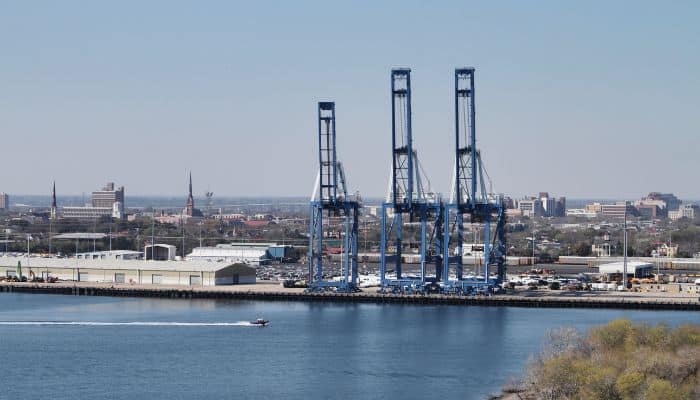

The port has supported more than 187,000 jobs and generated over 17 billion US dollars in economic activity. It has many terminals like the Wando Welch, the most technologically advanced facility in the port.
Recipient of many awards applauding its efficiency and commitment to a cleaner environment, the port is also upgrading its infrastructure to accommodate bigger ships.
In 2021, the Hugh K Leatherman Terminal was opened, which became a state-of-the-art facility among all container terminals in the US.
Hence, the Charleston Port is a crucial link in the transportation network and the supply chain, linking consumers and businesses to worldwide markets and supporting economic growth.
The Port of Oakland is the 9th busiest container port in the United States, handling about 2,337,125 TEUs in 2022. It handled 2.4 million TEUs in 2021 and 2,461,262 TEUs in 2020.
It lies on the eastern coast of San Francisco Bay and is the main port for trade with Asia. It is also a key export centre for commodities like agricultural goods, technology and wine.
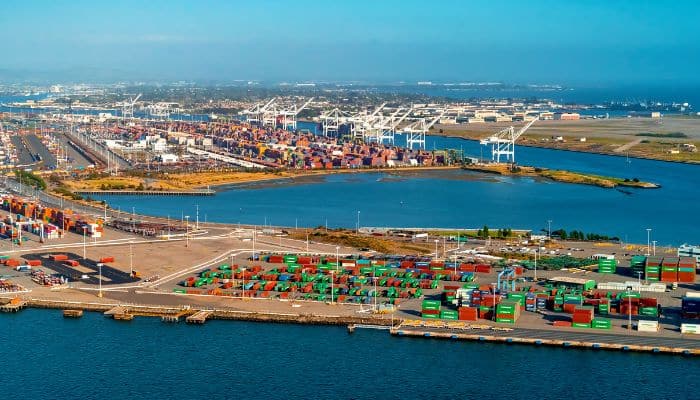

It has 2 container terminals and around 27 cranes in total. The port authorities are undertaking a project to accommodate bigger vessels and also constructing a new railway yard for improving intermodal connectivity.
The port has brought forward a truck management program to decrease emissions from vehicles plying in and around the premises. Although Covid-19 hampered trade, the Oakland port remained resilient and handled increased cargo volumes in the latter half of 2021.
Lastly, Oakland Port ranks among the 4 biggest Pacific Coast ports for containerised cargo, the other 3 being ports of Los Angeles, Long Beach and the Port of Seattle.
Lying in South Florida, the Port of Miami is the 10th busiest port in the country, handling 1,197,644 TEUs in 2022 and 1 million TEUs in 2021.
It is also the world’s largest and busiest cruise port, known as the cruise capital, receiving about 5 million passengers annually.
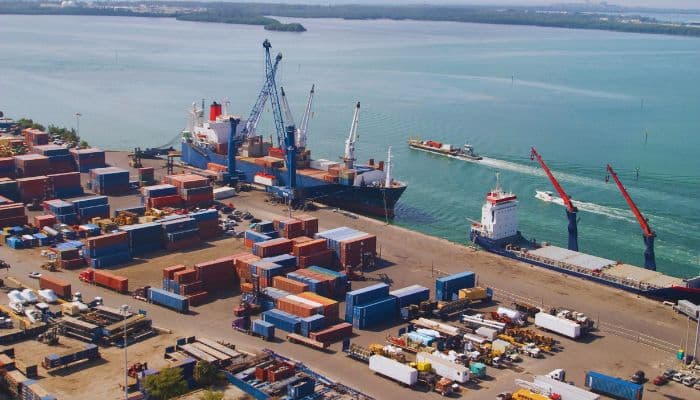

It is a major trade gateway for reaching out to the Carribean region and Latin America. It primarily deals with containerised cargo, followed by breakbulk, vehicles and industrial equipment.
It supports more than 300,000 jobs and makes over 41 billion US dollars in revenue annually. Amongst its many terminals is the PortMiami Tunnel that links it to downtown Miami and Interstate 95. This decreases congestion and improves the flow of cargo.
It recently undertook a major infrastructure project named the Deep Dredge Project which deepened the main channel, enabling it to accommodate bigger ships.
You might also like to read-
Disclaimer: The author’s views expressed in this article do not necessarily reflect the views of The Marine Learners. Data and charts, if used in the article, have been sourced from available information and have not been authenticated by any statutory authority. The author and The Marine Learners do not claim it to be accurate nor accept any responsibility for the same. The views constitute only the opinions and do not constitute any guidelines or recommendations on any course of action to be followed by the reader.
The article or images cannot be reproduced, copied, shared or used in any form without the permission of the author and The Marine Learners.










We believe that knowledge is power, and we’re committed to empowering our readers with the information and resources they need to succeed in the merchant navy industry.
Whether you’re looking for advice on career planning, news and analysis, or just want to connect with other aspiring merchant navy applicants, The Marine Learners is the place to be.